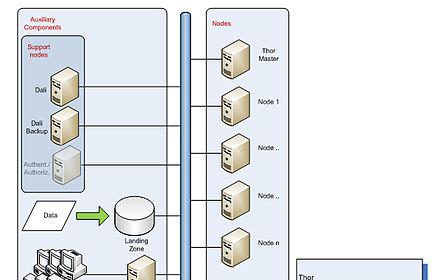
linux多线程同步的方法有哪些
时间:2023-05-29 来源:网络 人气:
多线程编程是现代编程中不可避免的一部分。在Linux环境下,实现多线程同步是一项重要的任务。本文将介绍几种常见的Linux多线程同步技术,并提供相关代码示例。
一、互斥锁
互斥锁是最常见的同步方法之一。它用于保护共享资源,以确保只有一个线程可以访问该资源。当一个线程获得了互斥锁时,其他线程就必须等待该线程释放锁才能继续执行。
在Linux中,使用pthread_mutex_t结构体来实现互斥锁。以下是一个简单的互斥锁示例:
#include<pthread.h>
pthread_mutex_tmutex;
void*thread_func(void*arg)
{
pthread_mutex_lock(&mutex);
//访问共享资源
pthread_mutex_unlock(&mutex);
}
intmain()
{
pthread_tthread;
pthread_mutex_init(&mutex,NULL);
pthread_create(&thread,NULL,thread_func,NULL);
//...
}
二、条件变量
条件变量用于在线程之间传递信号,以便它们可以相互通信。当一个线程需要等待某个条件满足时,它会阻塞并等待另一个线程发出信号。
在Linux中,使用pthread_cond_t结构体来实现条件变量。以下是一个简单的条件变量示例:
#include<pthread.h>
pthread_mutex_tmutex;
pthread_cond_tcond;
void*thread_func(void*arg)
{
pthread_mutex_lock(&mutex);
//等待条件
pthread_cond_wait(&cond,&mutex);
//条件满足后继续执行
pthread_mutex_unlock(&mutex);
}
intmain()
{
pthread_tthread;
pthread_mutex_init(&mutex,NULL);
pthread_cond_init(&cond,NULL);
pthread_create(&thread,NULL,thread_func,NULL);
//...
//满足条件后发出信号
pthread_cond_signal(&cond);
}
三、读写锁
读写锁用于保护共享资源,以便多个线程可以同时读取该资源,但只有一个线程可以写入该资源。这种锁通常用于读操作比写操作频繁的场景中。
在Linux中,使用pthread_rwlock_t结构体来实现读写锁。以下是一个简单的读写锁示例:
#include<pthread.h>
pthread_rwlock_trwlock;
void*read_thread_func(void*arg)
{
pthread_rwlock_rdlock(&rwlock);
//读取共享资源
pthread_rwlock_unlock(&rwlock);
}
void*write_thread_func(void*arg)
{
pthread_rwlock_wrlock(&rwlock);
//写入共享资源
pthread_rwlock_unlock(&rwlock);
}
intmain()
{
pthread_tread_thread,write_thread;
pthread_rwlock_init(&rwlock,NULL);
pthread_create(&read_thread,NULL,read_thread_func,NULL);
pthread_create(&write_thread,NULL,write_thread_func,NULL);
//...
}
四、屏障
屏障用于在多个线程之间同步操作。当一个线程达到屏障时,它会被阻塞,直到所有其他线程也到达屏障才能继续执行。
在Linux中,使用pthread_barrier_t结构体来实现屏障。以下是一个简单的屏障示例:
#include<pthread.h>
pthread_barrier_tbarrier;
void*thread_func(void*arg)
{
//...
pthread_barrier_wait(&barrier);
//...
}
intmain()
{
pthread_tthread1,thread2;
pthread_barrier_init(&barrier,NULL,2);
pthread_create(&thread1,NULL,thread_func,NULL);
pthread_create(&thread2,NULL,thread_func,NULL);
//...
}
以上是Linux多线程同步的几种常见方法,每种方法都有其适用场景。希望本文能对你理解多线程编程有所帮助。

whatsapp最新版:https://cjge-manuscriptcentral.com/software/4276.html
相关推荐
教程资讯
教程资讯排行

系统教程
-
标签arclist报错:指定属性 typeid 的栏目ID不存在。












